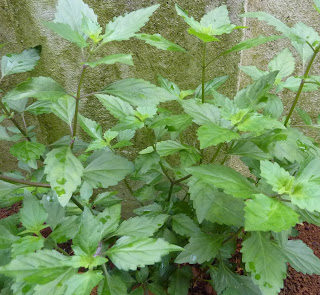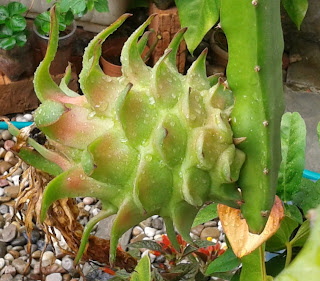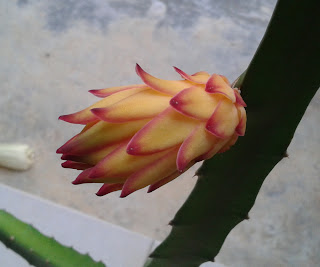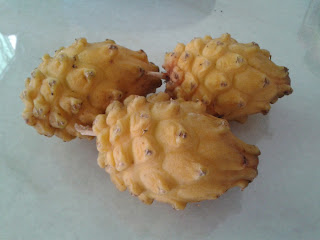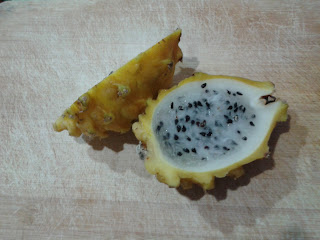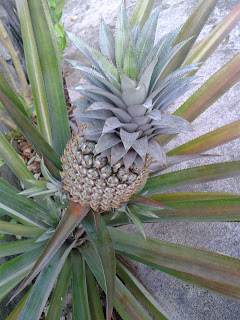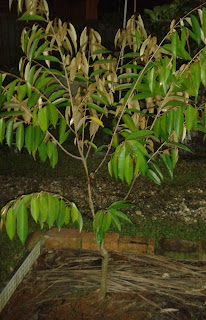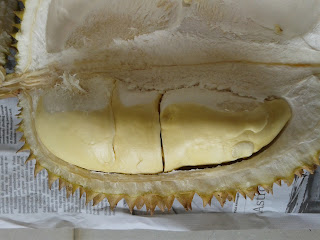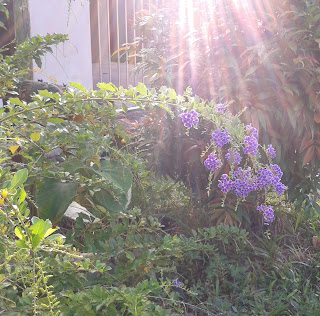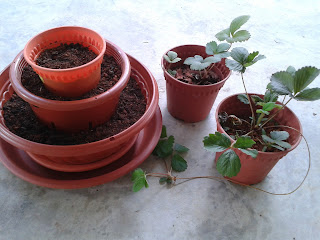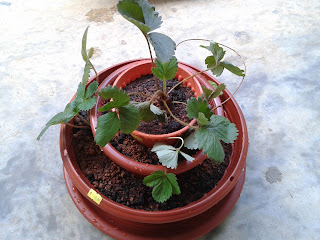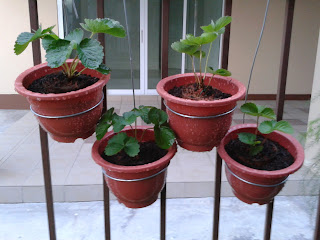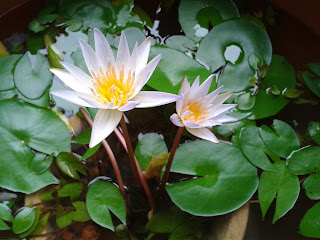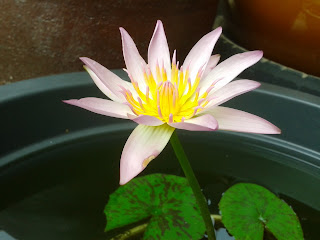Penny Wort / Daun Pegaga / Centella asiatica
http://en.wikipedia.org/wiki/Pegaga
Excerpt from Wikipedia...
Culinary use
Centella is used as a leafy green in Sri Lankan cuisine, where it is called Gotu Kola. In Sinhalese Gotu is translated into conical shape and Kola for leaf. It is most often prepared as malluma (මැල්ලුම); a traditional accompaniment to Rice and curry, and goes especially well with vegetarian dishes such as dhal, and jackfruit or pumpkin curry. It is considered quite nutritious. In addition to finely chopped Gotu Kola, malluma almost always contains grated coconut and may also contain finely chopped green chilis, chili powder, turmeric powder and lime (or lemon) juice.
A variation of the extremely nutritious porridge known as Kola Kenda is also made with Gotu Kola by the Sinhalese people of Sri Lanka. Kola Kenda is made with very well boiled red rice (with extra liquid), coconut milk and Gotu Kola which is liquidized. The porridge is accompanied with Jaggery for sweetness. Centella leaves are also used in the sweet "pennywort drink."
In Indonesia, the leaves are used for sambai oi peuga-ga, an Aceh type of salad, also mixed into asinan in Bogor.
In Vietnam and Thailand, this leaf is used for preparing a drink or can be eaten in raw form in salads or cold rolls. In Bangkok, vendors in the famous Jatujak Market sell it alongside coconut, roselle, crysanthemum, orange and other health drinks.
In Malay cuisine the leaves of this plant are used for ulam, a type of Malay salad.[3]
It is one of the constituents of the Indian summer drink "thandaayyee".
Medicinal effects
Gotu kola is a mild adaptogen, is mildly antibacterial, anti-viral, anti-inflammatory, anti-ulcerogenic, anxiolytic, a cerebral tonic, a circulatory stimulant, a diuretic, nervine and vulnerary.[4][5]
Centella asiatica may be useful in the treatment of anxiety and may be used as a promising anxiolytic agent in the future.[6]
In Thailand cups with gotu kola leaves are used as an afternoon stimulant.[7] A decoction of juice from the leaves is thought to relieve hypertension.[citation needed] A poultice of the leaves is also used to treat open sores.
Richard Lucas claimed in a book published in 1966 [8](second edition in 1979) that a subspecies "Hydrocotyle asiatica minor" allegedly from Sri Lanka also called "Fo ti tieng", contained a longevity factor called 'youth Vitamin X' said to be 'a tonic for the brain and endocrine glands' and maintained that extracts of the plant help circulation and skin problems.[9] However according to medicinal herbalist Michael Moore, it appears that there is no such subspecies and no Vitamin X is known to exist.[10]
Several scientific reports have documented Centella asiatica's ability to aid wound healing[11],[12] which is responsible for its traditional use in leprosy. Upon treatment with Centella asiatica, maturation of the scar is stimulated by the production of type I collagen. The treatment also results in a marked decrease in inflammatory reaction and myofibroblast production.[13]
The isolated steroids from the plant have been used to treat leprosy.[14][15] In addition, preliminary evidence suggests that it may have nootropic effects.[16] Centella asiatica is used to re-vitalize the brain and nervous system, increase attention span and concentration,[17] and combat aging.[16] Centella asiatica also has anti-oxidant properties.[4] It works for venous insufficiency.[18] It is used in Thailand for opium detoxification.
Followers of Sri Sri Thakur Anukulchandra commonly known as Satsangees all over the world take one or two fresh leaves with plenty of water in the morning after morning rituals. This is prescribed by Sri Sri Thakur Himself.
'There have been many reports showing the medicinal properties of C. asiatica extract in a wide range of disease conditions like diabetic microangiopathy, edema, venous hypertension, venous insufficiency (Incandela et al., 2001a; Incandela et al., 2001b; Incandela et al., 2001c). The role of C. asiatica extract in the treatment of memory enhancement and other neurodegenerative disorders is also well documented (Mohandas Rao et al., 2006). The first report concerning the antitumor property of C. asiatica extract was on its growth inhibitory effects on the development of solid and ascites tumor and that lead to increased life span of the tumor bearing mice (Babu et al., 1995). The authors also suggested that the extract directly impeded the DNA synthesis. In our study, C. asiatica extract showed an obvious dose dependent inhibition of cell proliferation in breast cancer cells'[19]
Just another small fry scalping for pittance in a sea of sharks. ikan bilis main kupiao was originally to log kupiao matters of interest, but now houses what-not of interest.
Friday 30 December 2011
Monday 26 December 2011
Flora : Misai Kuching
Misai Kuching
You harvest the top two fully developed "leaves sets" and brew tea with it.
Very easy to propagate from cuttings. Just stick the cuttings into soil and water them. The cuttings will strike roots within a week.
You harvest the top two fully developed "leaves sets" and brew tea with it.
Very easy to propagate from cuttings. Just stick the cuttings into soil and water them. The cuttings will strike roots within a week.
Friday 23 December 2011
Flora : Dragon fruit
Dragon fruit
Red pitaya (Hylocereus costaricensis)
The evening before then bloom.
Flower blooms for a single night; hand polinate for maximum fruit size.
30 days from fruit set to harvest.
350g ~ 400g maximum weight per fruit.
Heart breaking... dropped flowers.
Yellow pitaya (Hylocereus megalantus)
1.5 years old yellow pitaya plant germinated from seed.
Saturday 17 December 2011
Thursday 15 December 2011
Flora : Durian
Durian
The king of fruits - either you love it, or you hate it.
The king of fruits - either you love it, or you hate it.
1.5 years old tree; another 3 years to go...
How to choose good durian?
Simple ;)
- fruit's shape
- thorns' appearance
- weight's appropriate-ness
- smell
... or just ask the seller to "pau ciak", pry it open on the spot. No "pau", don't buy.
Tuesday 13 December 2011
Flora : Duranta
Duranta ?
Not sure if this flower falls under duranta family. It's flowering behaviour is similar to duranta but does not produces the round, golden coloured fruits. The fruits are longish and smaller than duranta's. But one thing it does well is attracting lots of bees in the morning.
Not sure if this flower falls under duranta family. It's flowering behaviour is similar to duranta but does not produces the round, golden coloured fruits. The fruits are longish and smaller than duranta's. But one thing it does well is attracting lots of bees in the morning.
Sunday 11 December 2011
Flora : Strawberry
Strawberry
Species 1. The fruit is roundish, flower stalk is short. Fruits ripen within a week from setting.
Species 2. The fruit is longish, flower stalk is long. Fruits take more than a week to ripen.
Wild strawberry.
Easy to grow. Fruits are small and tasteless.
A three-tiers shoe-string budget strawberry planter project:
(Species 2 strawberry plants)
Ended up a disaster. The new location in the shaded car porch was too hot/dry (even though shaded). I lost the two mother plants but manage to save the daughter plant when I move the planter pot back to the former shady spot under a shrub with filtered sunlight.
I am still coaxing the surviving daughter plant to thrive and produce runners.
A hanging strawberry planters project:
(Species 1 strawberry plants)
The idea of having the strawberry plants high up from ground, free from snails and millipedes infestation sounds great, but ended up a disaster. The exposed sunny location is just unbearable. The leaves were getting burned and withering. Moving the pots to a more shaded spot under my passion fruit canopy also did not help. Lost all plants. Luckily I still have the mother plants snucked away in a corner under dense foliage.
After having 2 experimental disasters, I will KIV the idea of having rows of strawberry plants laden with yummy red fruits in my garden. Well, at least under my fruit trees are more mature to provide sufficient covers.
Cool micro-climate is a MUST it seems, with exposure to the morning dew and rain. So shaded car porch is a no-no.
16 Dec 2011
Flora : Water lily
Water lily
Waterlily is an alluring plant when in full bloom; bright petals emerging out of the murky depth, inviting you to take a closer look.
One might think planting water lily is as simple as sticking a plant into muddy water and leave it alone. Well..., unless that muddy water happens to be of correct depth, with correct amount of nutrient, exposed to full sun, and with water organisms to control water vectors (spelled m. l-a-r-v-a-e).
Water lily requires full sun.
Under full shade it will just wither back and dies.
Partial sun is ok, but after a while you will notice the plant growth biasing towards the sun. It will not wither and dies nor will it profusely grow and bloom. In the monsoon season when Mr. Sun can hide behind clouds for days and the frogs come out to sing, the less established plants can start withering.
Water lily needs regular fertiliser feeding in the right amount. Too much fertiliser and the water will turn murky green with algae growth. Too little fertiliser will result in stagnant growth or even some leaves to die back.
With sun and fertiliser requirements taken care of, you will need aquatic organisms to control mosquito larvaes. In a small confined setting, fish is not a good choice. However, prawns/shrimps will thrive happily. An advantage of prawns is they eat algae. They eat almost anything in the water that does not eat them.
Occasionally, prawns will even share the space with tadpoles.
Water lily is propagated via plantlets produced at the stem end of the leaves.
"Pamela" water lily - this is a dwarf species with purplish blooms.
"????" water lily - this is a mid-dwarf species with red blooms.
Rescued from certain doom after placing it under full shade out of ignorance. I manage to coax two new plantlets out of the withering leaves.
A frog decided to call home.
(After the putty kat decided to quit hunting frogs, the frogs are back with vengence. Breed and prosper, Kermit.)
11-Dec-2011
Waterlily is an alluring plant when in full bloom; bright petals emerging out of the murky depth, inviting you to take a closer look.
One might think planting water lily is as simple as sticking a plant into muddy water and leave it alone. Well..., unless that muddy water happens to be of correct depth, with correct amount of nutrient, exposed to full sun, and with water organisms to control water vectors (spelled m. l-a-r-v-a-e).
Water lily requires full sun.
Under full shade it will just wither back and dies.
Partial sun is ok, but after a while you will notice the plant growth biasing towards the sun. It will not wither and dies nor will it profusely grow and bloom. In the monsoon season when Mr. Sun can hide behind clouds for days and the frogs come out to sing, the less established plants can start withering.
Water lily needs regular fertiliser feeding in the right amount. Too much fertiliser and the water will turn murky green with algae growth. Too little fertiliser will result in stagnant growth or even some leaves to die back.
With sun and fertiliser requirements taken care of, you will need aquatic organisms to control mosquito larvaes. In a small confined setting, fish is not a good choice. However, prawns/shrimps will thrive happily. An advantage of prawns is they eat algae. They eat almost anything in the water that does not eat them.
Occasionally, prawns will even share the space with tadpoles.
Water lily is propagated via plantlets produced at the stem end of the leaves.
"Pamela" water lily - this is a dwarf species with purplish blooms.
"????" water lily - this is a mid-dwarf species with red blooms.
Rescued from certain doom after placing it under full shade out of ignorance. I manage to coax two new plantlets out of the withering leaves.
A frog decided to call home.
(After the putty kat decided to quit hunting frogs, the frogs are back with vengence. Breed and prosper, Kermit.)
11-Dec-2011
Subscribe to:
Posts (Atom)
